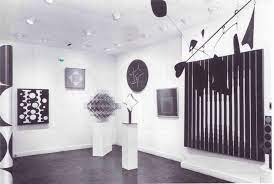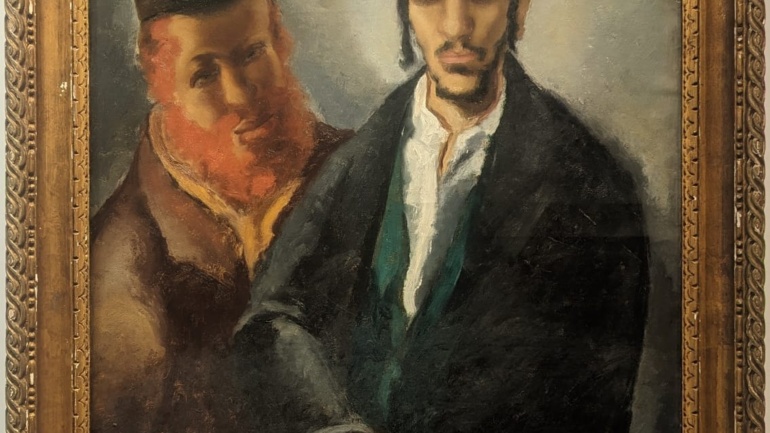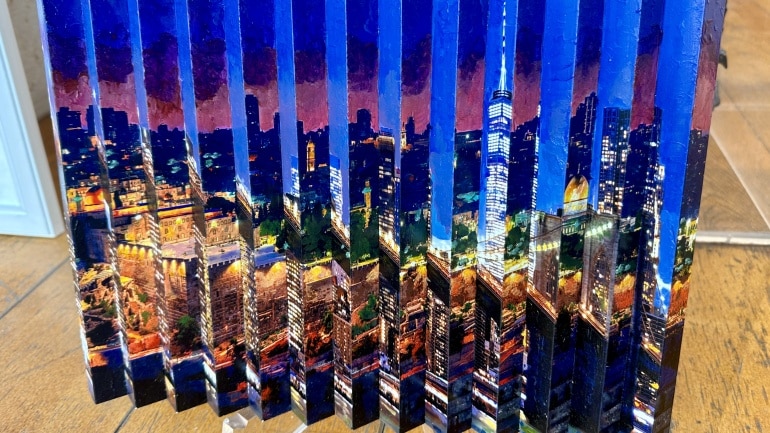Kinetic art or Kineticism is a trend in contemporary art that depends on motion for its effects. It includes the real movement of the entire work or its individual components. Artists revive objects by motors or structure works so that they are responsive to the air flows.
History of development
Changes in the field of technology and, as a result, in the field of human perception of the reality, required the search for a new way of artistic expression. People tried to explore the possibilities of movement together with the element of time and the notion of vision. The rate of actuality and the perspective on life were changing dramatically.
The relevant ideas were firstly stated by the Italian Futurist movement in the First Manifesto of Futurism, published by Philippe Marinetti in 1909. The speed, movement and antistatic were recognized as a new subject of the image. One of the articles:
“…We want to exalt movements of aggression, feverish sleeplessness, the double march, the perilous leap, the slap and the blow with the fist”.
However, shortly became clear, that such new ideas cannot show themselves by traditional painting and easel sculpture. Thus, the search for new artistic methods of depiction and display of contemporary reality began.
Emergence
Elements of Kinetic art have existed since ancient times in various kinds of tricks, that animated sculptures in applied arts or theatrical scenography. Though Kineticism, as we understand it nowadays, originated in the 20-30s of the 20th century. Its aim was to overcome the traditional static nature of sculpture in order to fit it into the environment.
Experiences in the creation of dynamic plasticity can be found in Futurism, Dadaism, Bauhaus and Russian constructivism.
Marcel Duchamp’s “Bicycle Wheel” is “the first piece” of kinetic art. Anticipating the creation of his “readymade”, Duchamp connected a bicycle fork with front wheel mounted upside-down on a wooden stool.
American artist Alexander Calder stood at the origin of kinetic art. However, Calder was not the first to create a mobile sculpture, in fact this honour belonged to Vladimir Tatlin with his “Contre-Reliefs“, featuring a series of suspended reliefs. Also, he created the project for the Monument to the Third International (1919-1920). Tatlin planned the main framework to contain four large suspended geometric structures, which would rotate at different rates.
In 1920 Alexander Rodchenko followed experiments with “Hanging Construction”. Also, Nahum Gabo in his “Standing Wave” (1920) linked kinetic art with constructivism.
Alexander Calder
From the early 1930s, Alexander Calder began to create abstract dynamic designs. Due to the fact that they were powered by a motor, Alexander Calder named his objects “mobiles”. Subsequently, the sculptor’s works set in motion not only by motors, but also by natural air flows. Especially, in 1941 the artist produced his famous “Arc of Petals”, the movement of which was a result of air currents. As Calder emphasized, kinetic art was striving to “lift the figures and scenery off the page and prove undeniably that art is not rigid”. Kinetic artists used mechanical or natural motion to set a new relationship between art and technology.
In 1955, at Denis Rene Gallery in Paris, kinetic art merged with optical art for the first time. The works of op-art artists consisted of various visual effects and illusions, based on the viewer’s perception of flat and spatial figures.
1960s
Artists from Eastern Europe and Latin America joined the Kinetic movement in the postwar period. The trend finally took shape in the 60s in the work of the French artist Nicolas Schaeffer (“Shapes and Colors”, 1961).
Argentinean sculptor Julio Le Park created the effect of flickering light with the help of moving squares of non-ferrous metal, that were hanging on the nylon threads.
Swiss artist Jean Tinguely made “self-destructing machines”: “Radio Sculpture with a Feather” (1962) and “Drawing Machines”.
Israeli Kinetic artist Agam
Among famous kinetic designers, the name of Israeli artist Yaacov Agam appears. He is best-known for three-dimensional paintings and sculptures. Agam participated in the mentioned above legendary exhibition at Denise Rene Gallery in Paris. Remarkably, a type of print, that uses barrier-grid animation to present totally different images became known as “Agamograph” after the artist. Kings gallery has a large selection of Agam’s kinetic and optical artworks, including Megillaht Ester, Geometric Mirror and Magen David. Please find special blogs about “The Agam Mezuzah”, “Kiddush Cup” and “The Bible”.
The techniques of kinetic art are widely used in the organization of various exhibitions, shows, as well as in the design of parks and squares.
Kings Gallery is a leading fine art gallery established in Jerusalem in 1995. With over 20 years of experience, Kings Gallery strives to collect and sell the highest quality historic and contemporary International art. The gallery specializes in artists from the early period of the 1920’s. Also, Kings Gallery features leading up-and-coming young artists who will be prominent names in the next few years.





